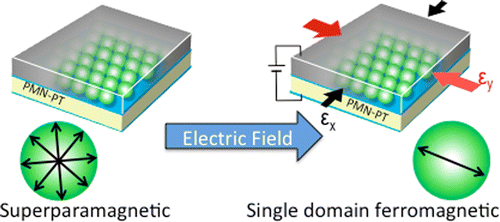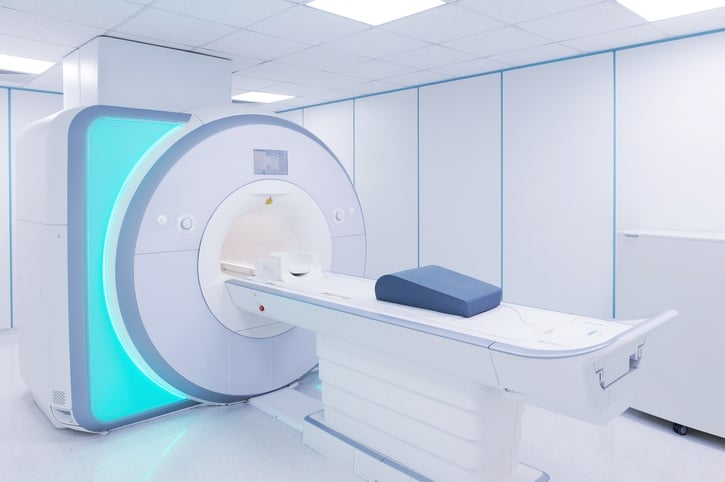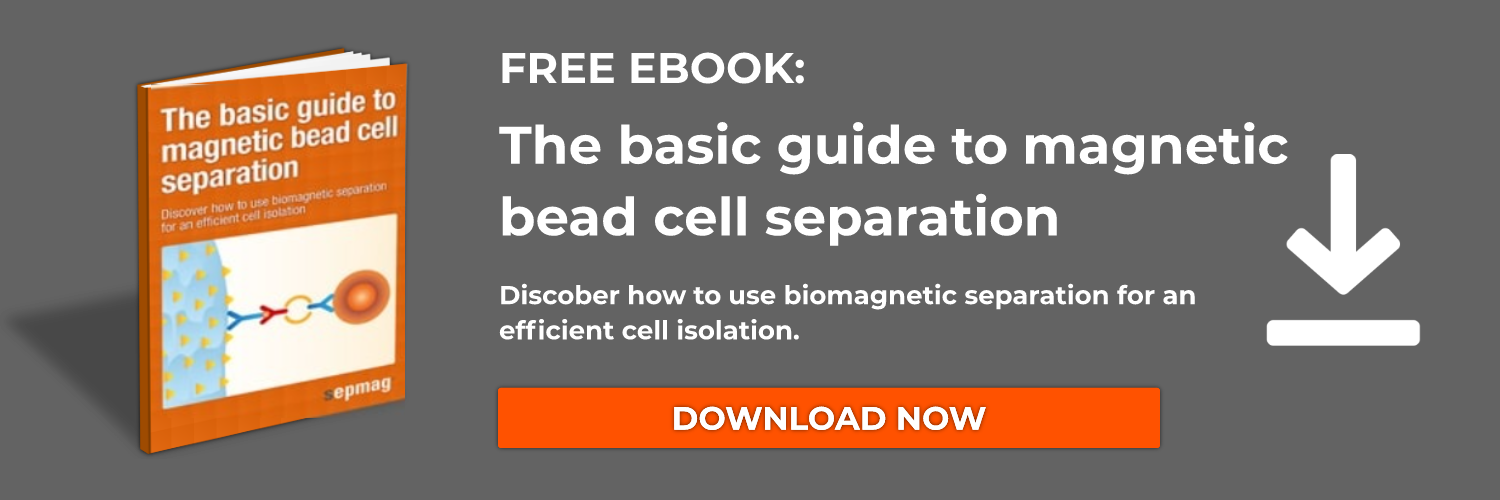Superparamagnetic iron-oxide nanoparticles (SPIONs) are small synthetic maghemite (γ-Fe2O3), magnetite (Fe3O4), hermatite (α-Fe2O3) particles and mixed oxides of iron with transition metal ions (e.g. copper, cobalt, nickel, and manganese) with a core from 10-100 nm in diameter. Magnetite and maghemite nanoparticles are the most widely used SPIONs in various biomedical applications both as diagnostic, therapeutic and imaging purposes.
“Superparamagnetism” phenomenon is defined as ferro- and ferrimagnetic particles (i.e. materials wtih high magnetic response) losing the magnetic memory upon magnetization. This feature is size-dependent; the bigger particles of a certain diameter (the Superparamagnetic size, usually a few nanometers) remain magnetized even after removing the applied magnetic field, whereas the smaller particles demonstrate zero magnetization if not exposed to a magnetic field regardless of the intensity of the previously applied magnetic field.

Superparamagnetic iron-oxide nanoparticles have been used as targeted magnetic resonance contrast agents in magnetic resonance imaging (MRI), among all, allowing non-invasive diagnosis of progressive diseases. Superparamagnetic iron-oxide nanoparticles have been used as targeted magnetic resonance contrast agents, allowing diagnosis of progressive diseases in their early stages such as cancer and some medical conditions such as cardiovascular diseases, Molecular imaging, Autoimmune disorders, Central nervous system disease, infection and inflammation.
SPIONs provide higher resolution and better quality images which has rendered them an attractive alternative to the conventional contrast chemicals such as gadolinium-based MRI contrast agents, particularly in patients with renal dysfunction who are at risk of nephrogenic systemic fibrosis. Basically, there are three types of SPIONs based on their size: standard SPIONs (50–180 nm), ultra-small SPIONs (10–50 nm) and tiny SPIONs (10 nm). The ultra-small SPION are the most commonly used as MRI contrast agents.
Fundamentals of SPION-enhanced MRI
In SPION-enhanced MRI, the paramagnetic behavior of the particles is exploited, and the induced magnetic moments of the particles create local magnetic fields that affect the nearby water molecules. The machine detects the T1, T2 relaxation times of those water molecules. These times differ according to tissue type. Mapping the relaxation times produces a high-resolution image of internal tissue.
- The T1 relaxation time is the rate at which excited spinning protons return to equilibrium and realign with the external magnetic field.
- The T2 relaxation time is the rate at which excited protons lose coherence with each other.
A T1-weighted scan shows all fat deposits as high intensity pixels in the image. A T2-weighted scan shows all fat and water as high intensity pixels.
The two types of images are used together to map organs and diagnose disease. After IV injection into humans and animals, larger SPIONs (>16nm hydrodynamic diameter) are readily engulfed by macrophages. By tracking the T2 and T2* relaxation activity within macrophages, a site of inflammation or infection can be readily identified.
Larger SPIONs are better for T2 relaxation imaging, while smaller SPIONs are better for T1 relaxation imaging. Additionally, the creation of better SPIONs for T1 contrast involves increasing the ratio of maghemite (Fe2O3), which has a lower magnetization, to magnetite (Fe3O4). Another benefit of the smaller SPIONs (~5nm) is that they can be rapidly cleared from the body via the renal system. The larger SPIONs cannot be cleared by this method, and as a result stay in the body longer, which prevents longitudinal re-imaging.
SPION-enhanced MRI imaging can be used to identify other cells or tissues other than macrophages if an antigen-specific coating is applied to the particles.
One example is the use of transfection agents, specific coatings, or functional moieties to allow the incorporation of SPIONs into transplanted stem cells. The stem cells can then be tracked as they move throughout the body. Another application is using MRI to identify cancer cells by coating the SPIONs with targets to bind to cancer cell specific antigens.
Conclusion
With the progress of the biomedical field, a large number of biomaterials and techniques have emerged which are still being worked on for potential multi-functionality they might offer. SPIONs in recent decades have proved to be very promising in different sectors of biomedical science with a variety of applications including MRI imaging with lower in-vivo toxicity and higher quality of their conventional chemical counterparts.
For more information:
Iron-Based Superparamagnetic Nanoparticle Contrast Agents for MRI of Infection and Inflammation. Alexander Neuwelt, Navneet Sidhu, Chien-An A. Hu, Gary Mlady, Steven C. Eberhardt, and Laurel O. Sillerud. American Journal of Roentgenology 2015 204:3, W302-W313.
In Vivo Molecular MRI Imaging of Prostate Cancer by Targeting PSMA with Polypeptide-Labeled Superparamagnetic Iron Oxide Nanoparticles. Zhu. Y. Int J Mol Sci. 2015 Apr 28;16(5):9573-87
Related news:





